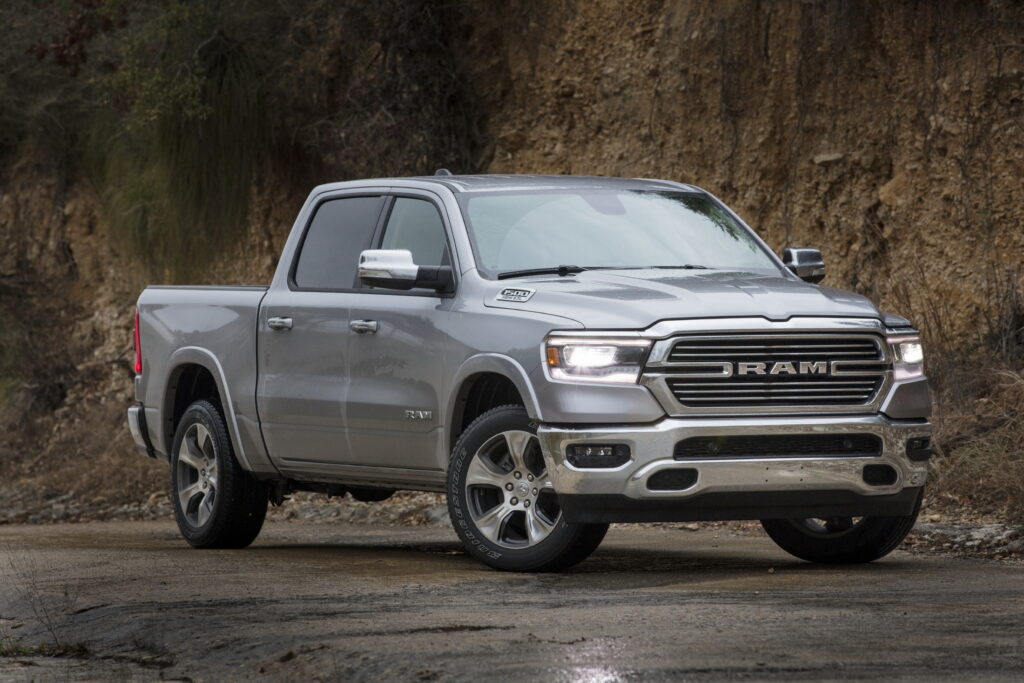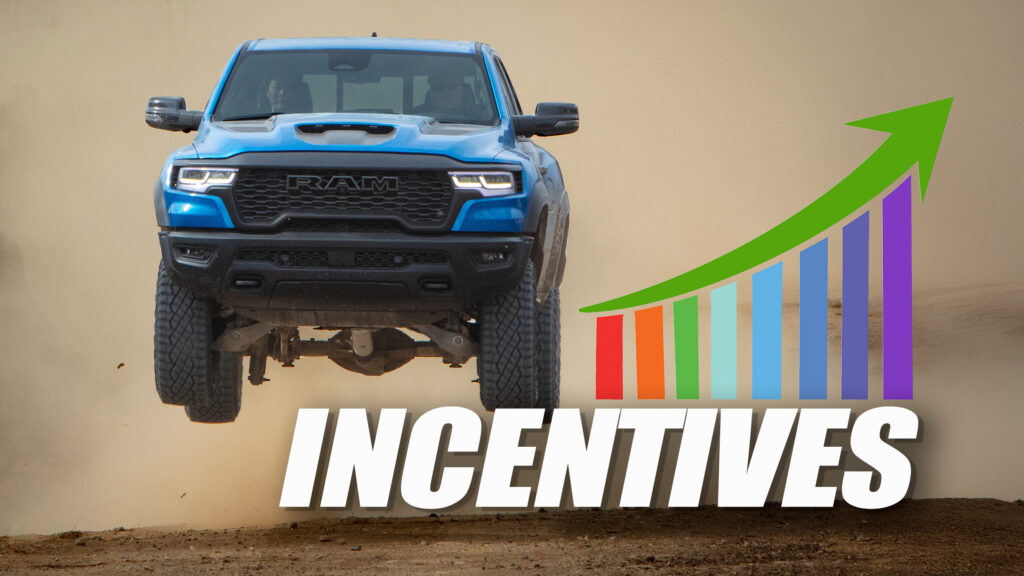- New-vehicle incentives have shot up by more than 60 percent in October compared to 12 months prior.
- Eight automakers had incentive packages above 10 percent of average transaction prices last month, Kelley Blue Book says.
- Automakers are being more generous as they attempt to reduce inventory, with Stellantis offering some of the best deals.
New cars today cost pretty much the same as they did last year, but incentives are vastly improved, as automakers are dishing them out like early Christmas presents to clear overstuffed inventories before the year’s end.
New data from Kelley Blue Book shows that the average transaction price (ATP) paid for a new vehicle in October was $48,623, up fractionally from September’s $48,423 ATP, and not wildly different from October 2023’s $47,826.
Related: Weak Sales Lead To Biggest Inventory Since Pandemic, Stellantis Drowning In Unsold Cars
But new-vehicle incentives as a proportion of ATP rose from 7.2 percent in September of this year to 7.5 percent in October. Doesn’t sound like a big deal, right? Zoom out to look at what’s been happening over the past 12 months however, and a series of small boosts in incentives adds up to a 60 percent increase compared to one year ago.
KBB says incentives have in fact been growing even longer, for more than two years, after many automakers recovered from dangerously low levels of inventory during the semiconductor crisis. Now some brands have too much inventory and are throttling back production or ramping up their incentive packages to help clear some space.

“’Tis the season for automakers to make their final push for 2024 sales,” said Cox Automotive Executive Analyst Erin Keating. “While some automakers focus on managing production, many will likely maintain or even increase their seasonal incentives to attract buyers. With competition intensifying, these strategies will be crucial in maintaining market share and driving end-of-year sales. Our team is generally optimistic for new-vehicle sales to close out the year – extra incentives will certainly help.”
And that’s good news for buyers. KBB’s analysis showed that eight mainstream brands had average incentive packages above 10 percent of average transaction prices in October. Chrysler, Dodge, Jeep and Ram all had incentive packages above the industry average, with Ram’s incentives among the most enticing. But anyone shopping for Porsche, Toyota, Land Rover or Cadillac was less likely to find a hot deal. Those automakers had the lowest incentives in the industry.

Cox Automotive
Incentives for EV buyers are particularly high right now, the report says. The average incentive deal for an EV was 13.7 percent of ATP, more than double the 5.6 percent seen a year ago. But there were also plenty of incentives available on combustion vehicles. They reached 9.4 percent of ATP on compact SUVs in October, where the average transaction price was $36,769 in October, nearly 30% below the industry average, and 8.7 percent on full-size trucks.




